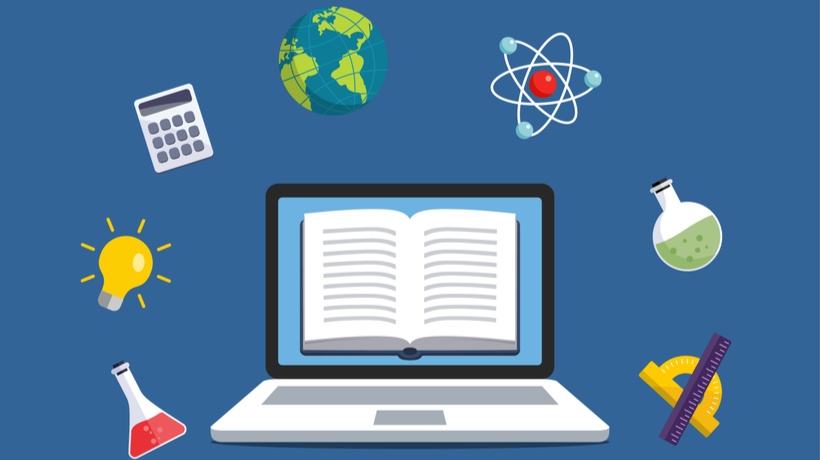In the last few years, the education and learning market has actually experienced a dramatic change, mostly driven by the quick evolution of technology. Among one of the most considerable advancements in this world is the appearance of instructional modern technology, or EdTech, systems. These digital platforms have not only redefined conventional learning approaches however have actually also democratized education and learning, making it extra easily accessible, engaging, and individualized for learners worldwide.

As the demand for high quality education continues to grow, EdTech systems are playing an increasingly critical role fit the future of discovering. This article delves into the world of EdTech, discovering its impact, benefits, and the interesting technologies it brings to the academic landscape.
The Effect of EdTech Operatings Systems on Education And Learning
EdTech platforms have substantially influenced the method education and learning is supplied and eaten. By leveraging digital devices and sources, these platforms have actually damaged geographical barriers, allowing learners from varied histories to accessibility high-grade education and learning anytime, anywhere. This international reach is one of the specifying attributes of EdTech, eliminating constraints and creating possibilities for lifelong knowing.
Furthermore, EdTech systems have actually presented a brand-new degree of adaptability to education. Unlike traditional class setups, these platforms use learners the flexibility to pick their rate, schedule, and even preferred discovering design.

This flexibility is especially advantageous for working specialists, moms and dads, and individuals who might not fit the mold of standard education systems.
Substantial strides in information analytics and expert system have additionally enhanced the capacities of EdTech platforms. By assessing user actions and efficiency, these systems can provide tailored understanding experiences, dealing with private toughness and weak points. This individualized method not just maximizes discovering end results but also cultivates a much deeper understanding of the subject matter.
- Boosted ease of access to education throughout geographical borders
- Adaptable discovering timetables customized to specific requirements
- Personalized discovering experiences with sophisticated analytics
- Affordable services contrasted to standard education systems
As EdTech platforms continue to develop, they hold the pledge of making education and learning more comprehensive and reliable for all.
Cutting-edge Features and Devices of EdTech Platforms
EdTech systems are renowned for their innovative features and devices designed to boost the learning experience. One such attribute is interactive content, which changes passive learning right into an interesting activity. Through multimedia discussions, simulations, and gamified learning experiences, platforms mesmerize learners’ attention and motivate active participation.

Collaborative|Collective|Joint} devices are an additional characteristic of EdTech platforms. These devices promote interaction and cooperation among students, instructors, and peers, despite their physical areas. Online class, conversation online forums, and group projects are just a couple of instances of how EdTech urges collective discovering, promoting a feeling of neighborhood and shared knowledge.
Additionally, many EdTech systems use extensive analysis tools that give immediate responses and PLEASE HELP “Given a sample mean of 3.56 and a standard deviation of 0.98, which value falls within the 90% confidence interval for a sample size of 45?” A. 3.21 B. 3.28 C. 3.83 D. 3.57 track development with time. This real-time comments is invaluable for both students and educators, allowing them to recognize locations for improvement and adapt their techniques as necessary.
Challenges and Considerations in EdTech
Despite the many advantages of EdTech platforms, they are not without their challenges. One of the primary issues is the digital divide, where unequal accessibility to innovation and web connectivity can exacerbate educational inequalities. To resolve this concern, stakeholders must work collaboratively to guarantee that all students have the necessary resources to gain from EdTech.
Personal privacy and information safety are likewise considerable factors to consider in the EdTech landscape. As platforms collect and assess large amounts of user data, guarding this information is critical to preserving depend on and safeguarding individuals’ privacy. Making sure conformity with information defense policies and carrying out robust safety and security procedures are necessary for the lasting growth of EdTech platforms.
Another difficulty is the possibility for innovation to outweigh the human aspect of education and learning. While EdTech provides ingenious remedies, it is vital to strike an equilibrium in between digital and typical learning approaches, maintaining the crucial duty of instructors in directing and mentoring trainees.
The Future of EdTech: Fads to See
As we look toward the future, several fads are positioned to shape the trajectory of EdTech systems. One emerging pattern is the integration of expert system and artificial intelligence, which will certainly continue to drive customization and flexible discovering experiences. These modern technologies hold the potential to more refine instructional web content and techniques, accommodating the distinct demands of each student.
- Artificial intelligence and artificial intelligence for personalized understanding
- Development of virtual and enhanced fact for immersive discovering experiences
- Boosted focus on skills-based and employment training
- Growing significance of lifelong discovering in a quickly changing task market
One more exciting growth is the rise of virtual and augmented fact in education and learning. These immersive modern technologies provide learners the opportunity to check out and engage with complex principles in a realistic and interesting fashion, changing areas such as science, background, and the arts.
Conclusion: Embracing the Potential of EdTech
To conclude, EdTech platforms go to the center of the instructional revolution, supplying innovative options to some of one of the most pressing difficulties in the sector. By improving accessibility, advertising involvement, and customizing finding out experiences, these platforms are leading the way for a more inclusive and effective education system.
While obstacles stay, the capacity of EdTech to transform learning is undeniable. By welcoming and harnessing the power of these platforms, instructors, students, and policymakers can interact to create a future where quality education and learning is offered to all, regardless of their circumstances.
Empowering Learners Via Innovation
Eventually, the increase of EdTech systems is a testimony to the power of modern technology to drive favorable change in education and learning. By encouraging learners with the tools and sources they need to be successful, EdTech is not only shaping the future of education and learning but likewise the future of culture all at once.
As we remain to discover the possibilities of EdTech, it is vital to continue to be focused on the core objective: supplying significant, engaging, and equitable learning experiences for every single learner across the globe.


